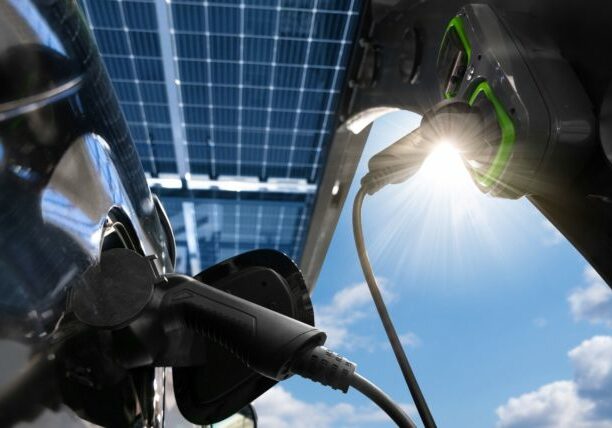April 2, 2012
Long Island Solar Farm – How Public/Private/Federal Partnerships Can Make Big Things Happen
By Maria Blais Costello
In early 2012, the Long Island Solar Farm, located in Upton, NY on Long Island, was given Renewable Energy World’s “Excellence in Renewable Energy – Reader’s Choice Award.” The project, a 164,312 panel solar PV farm, is a winning example of how state policy makers, public utilities, private investors, and the federal government can partner to create an innovative clean energy project and pave the way for a cleaner energy future.
This 32 MW project is the result of years of hard work and cooperation between BP Solar and MetLife (private co-investors, co-owners), the US DOE Brookhaven National Lab (federal partner and host site for the PV facility) and the Long Island Power Authority (public municipal utility, power purchaser, and public funder for clean energy markets.) Working together, this team effort has developed the largest photovoltaic array in the eastern U.S., and it is among the largest in the nation constructed on federal lands. The project went online in November 2011.
Long Island Power Authority (LIPA), a public utility with strong programs for clean energy development and a member of the Clean Energy States Alliance, has entered into a long-term power purchase agreement (PPA) with the Long Island Solar Farm (LISF) to buy the nearly 50 gigawatt hours of clean energy produced each year, along with the Renewable Energy Credits or RECs for the project. The cost to LIPA is estimated to be a total of $293 million (including interconnection costs) over the 20 year agreement or about $0.60 per month for the typical LIPA residential customer. This project will produce enough energy to power up to 4,500 Long Island homes and makes Long Island a national leader in clean, renewable energy.
According to LIPA’s chief operating officer, Michael D. Hervey, the solar farm will strengthen LIPA’s renewable energy portfolio as well as reduce its reliance on fossil fuels and assist New York State in meeting its 30% by 2015 RPS goal. The project is also expected to strengthen the local economy and create new, high-quality clean energy jobs.
Located on the Brookhaven National Lab property, the project site is an example of how use of DOE sites can attract both private and public investment, help create jobs, and encourage collaboration between federal and state agencies. As part of the project, LIPA, Brookhaven Lab, and BP Solar established a Natural Resources Benefits package that includes open space preservation, habitat preservation, research and restoration of lands around the solar power plant. This effort also established the Northeast Solar Energy Research Center and Lab where researchers will use data collected from the project to learn more about solar interconnection to the grid, and about the challenges of deploying a large-scale PV installation in the Northeast.
More information about the project benefits can be found at https://www.bnl.gov/SET/LISF.php.
As discussed in the blog post of January 12, 2012 by Lew Milford, Clean Energy Group, and Mark Muro, Brookings Institution, “Funding Growth: State Clean Energy Funds Can Help Invent the Future,” this type of funding collaboration between state, federal and private investors can help sustain the unprecedented growth that renewable energy technologies have experienced in the last decade. We hope to see more of these projects in the future.














